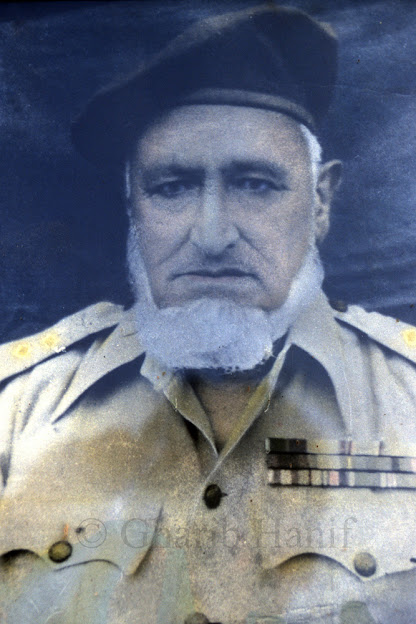Hast-o-Bood Part-23
Chapter IV
Historical background and brief overview of the state of Jammu and Kashmir
Historical background and brief overview of the state of Jammu and Kashmir
After the death of Emperor Jahangir, [1] Prince Khurram as Abul Muzaffar Shahabuddin Shah Jahan became the Emperor of India. He visited Kashmir four times during his reign from 1627 to 1657 AD. The first time was in 1635 AD, the second time was in 1638 AD, the third time was in 1642 AD and the fourth and last time was in 1650 AD. He was fond of construction. He planted several gardens here. Build palaces, baths, twelve rivers, etc., and repair and expand the buildings of your ancestors. This Mughal crown prince is also well known for his aesthetic tastes. He built the Peacock Throne at a cost of 200 million rupees. And he built the eighth wonder of the world, the Taj Mahal, in Agra as a visual love and devotion to the death of his beloved Queen Mumtaz Mahal.
On the death of Emperor Jahan, his goal was to be a virtuous, just, fair-minded, pious and pious son of Mohi-ud-Din Aurangzeb, the universal king of Delhi. He came to Kashmir only once in the year 1665. The most credible and remarkable event of his era which is related to Kashmir is Sarwar Do Jahan, the Lord of the Universe, the proud presence of Hazrat Muhammad (PBUH) on the right side of the blessed hair of the Holy Prophet (PBUH) being brought to this land and visiting the people and properties. [2] The summary of this incident is that at the end of the half of the eleventh century AH, the Sultan of the time became very angry with Syed Abdullah, a neighbor of the Prophet's court in Madinah, and deported him after confiscating his property. went. Only three blessings were left in his custody. One of them was the hair of the Holy Prophet (peace and blessings of Allaah be upon him). The second was the Holy Imama of Hazrat Mohammad (PBUH) and the third was the saddle of Hazrat Ali, may Allah bless him and grant him peace.
Syed Abdullah, accompanied by his Abyssinian slave Syed Anas, arrived in Delhi with these blessings in the service of the Mughal Emperor Shah Jahan. The king treated him with great devotion and devotion and offered him a small estate in the vicinity of Bijapur in the service of Syed Sahib. Syed Sahib now settled in the Indian subcontinent and by marrying here he was permanently blessed with a ceremony of devotion to the Mughal family. His sons established friendship with Sahibzada Darshkoh and thus they continued to flourish in this land. After the death of Syed Sahib, these blessings came into the custody of his sons. After the death of Shah Jahan, a battle was fought between his princes for the throne of Delhi. In which the defeat of Dara Shukoh and the victory of Mohi-ud-Din Aurangzeb changed the course of events. The companionship of the princes with Darius the Magnificent was no secret. So along with the prince, the star of his companions also came into circulation. Their property was confiscated in Bijapur and thus the life span of the Syedzads became narrow. He went to Delhi to restore the property but none of them survived in the Mughal court.
Meanwhile, he met Khawaja Nooruddin Aisha Bari, a Kashmiri businessman from Delhi. From which he expressed his plight and sought help. He borrowed from this merchant from time to time and made his living with great difficulty. This amount was so great that it was not possible for the sons to pay it. In return for the kindness of their benefactors, the Syeds expressed their intention to transfer the great gift of Muay Mubarak in the service of Khawaja Nooruddin Aisha Bari. Khwaja Sahib did not blossom with this honor and with the spirit of perfection and generosity took this happiness in his custody with the Abyssinian slave [3] named Syed Ansh who was in charge of the protection of the blessed hair. Soon after, he left Delhi for the state of Jammu and Kashmir via Lahore. So that this precious gift of the unseen can be saved for his family and the people of Kashmir. A few days after the departure of Khwaja Sahib from Delhi, the pamphlets informed the Delhi court about this important event. On which the emperor ordered that Khawaja Nooruddin Isha Bari should be brought to the royal court as soon as possible wherever he is. So the royal envoys set out in search of Khwaja Sahib.
to be continued ....
[1] Complete History of Kashmir by Muhammad-ud-Din Fauq, page number two hundred and two, page two hundred and eighteen
[2] Mirror of Kashmir, by Muhammad Abdullah Qureshi
[3] Guide to Kashmir, author Muhammaduddin Fauq, page number sixteen
[2] Mirror of Kashmir, by Muhammad Abdullah Qureshi
[3] Guide to Kashmir, author Muhammaduddin Fauq, page number sixteen



Comments
Post a Comment